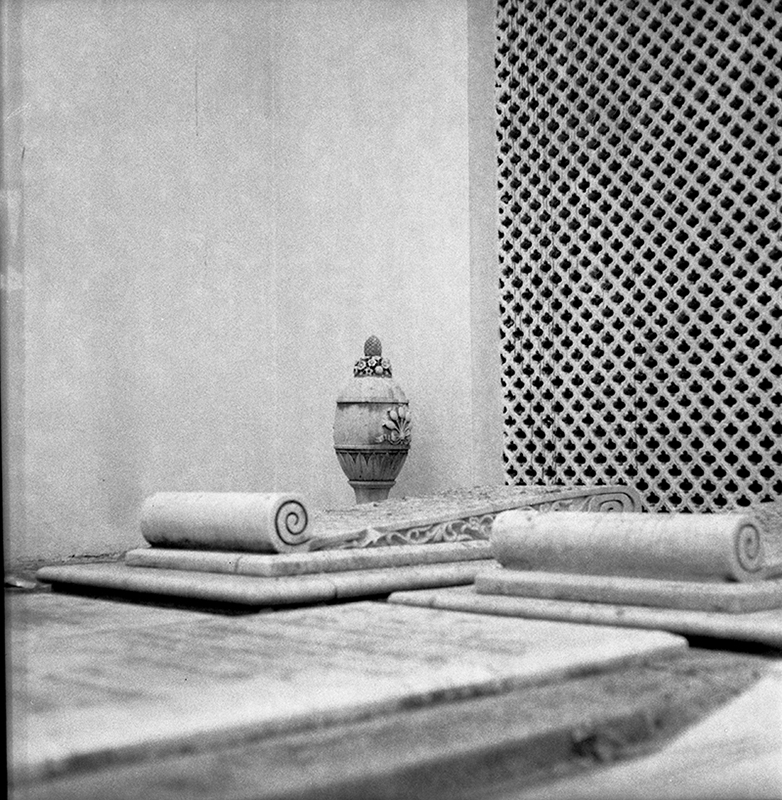Alakananda Nag




Grant Period: One year
Alakananda Nag is a Goa-based photographer. She graduated in Documentary Photography & Photojournalism from the International Center of Photography, New York. Though her training has been in traditional documentary, she has chosen to pursue a more conceptual / contemporary style, while sticking to her documentary roots in research and fact-finding. Her interest lies in personal stories, and the ideas of the self and its relationship to that which has disappeared. This grant supports Alakananda to undertake a visual and written exploration of the idea of attachment through an engagement with the minority community of Armenians in Kolkata, using alternative photographic processes.
Alakananda notes in her proposal that historically the Armenians have been in India since the 16th century. Mainly concentrated in Kolkata, they lived and flourished in the city and left only when the British left India. Typically tradesmen and hoteliers, this thrifty community has contributed to the city’s culture and architecture. There are many ‘firsts’ for the community - the first church of Kolkata, the first tombstone, the first person to record on the gramophone and so on. Addresses in current day Kolkata such as Park Street, Armenian Street, Free School Street have Armenian tags written all over them. In addition to this, books, journals, printing presses, theatre and music – all thrived in the little Armenian world of Kolkata.
While a majority of the Armenians left with the British, there were a few families who stayed back. In fact, they were left behind by the more privileged of the community. They exemplify the struggles of the less fortunate, trying hard to remember and restore their past glory. The ones who remain today are the last generation of Armenians numbering less than 300 people.
In 2010, Alakananda started photographing the Armenian community in Kolkata, the city where she was born and grew up. Her interest in the community sprang from the fact that despite being one of Kolkata’s oldest minority communities and being important contributors to its social and cultural fabric, they are slowly fading away into oblivion. While their numbers are shrinking at an alarming rate, they are also disappearing from the city’s archives, public memory and research on the city. In order to document this rapidly vanishing community, Alakananda started photographing them. Being trained as a documentary photographer, this came naturally to her.
After spending a few years documenting the Armenians and their spaces, Alakananda began to feel the need to move beyond this process. She understood that the core of the community lay not in what was seen but in the hidden. Gradually, the community that was once her subject turned into her collaborator. Since then they have been actively involved with her in her process of photographing them, engaging with their family archives and conducting interviews with them.
Alakananda hopes that this project will enable her to rekindle conversations around the community and enable for them a retelling and a reimagination of their own history and representation.
In terms of the process of making of the photographs, Alakananda will use alternative photographic processes. Shellac and indigo being the key trade items of the community, she will experiment with these ingredients to process certain photographs using available 18th century manuals as guide at an alternative photo process studio in Shantiniketan. She has also consulted an entomologist to understand the workings of an insect called Laccifer Lacca which cocoons itself as it produces shellac and finally gets consumed within it. Poetically, this is also a metaphor for the fast disappearing Armenian community.
The outcome of this project will be an exhibition/ installation and the draft of a book of photographs and essays. The exhibition/ installation will contain documentary photographs of spaces and objects, negatives in the collection of the families and portraits of family members prepared using alternative processes. In order to keep them in a permanent state of transience that reflects the state of the community, the negatives will not be made into positives. The exhibition will have letters written by the Armenian community and journals that have essays about them. The exhibition is likely to take place in the premises of the Holy Church of Nazareth in Kolkata around October 2018. Subsequently Alakananda plans to take the exhibition to Tehran and Yerevan. The research and the outcomes of this project will be made available online. The draft of a book that captures this work through photographs and essays will also be an outcome of this project.
One of the experts who evaluated this proposal writes in his evaluation report, ‘I believe this project is not only about documenting the glorious past of a minority community but also about a challenging and innovative experiment involving the medium itself. The applicant’s idea of using non-conventional materials to give life to an otherwise dead past sounds fascinating. At a time when photographers and artists are busy producing “digital images” for the “digital medium,” the idea of using non-conventional materials in producing and presenting the project is an excellent component’. Having made a few grants earlier in the area of alternative photography, IFA hopes that this project too will push the boundaries of this practice in the way it seamlessly connects the content, concerns and the process.
This grant is made possible with support from Technicolor India.
